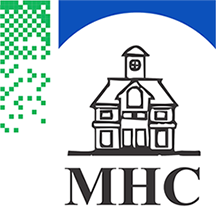Memorial Park Cenotaph Statue Plaque
- Site P10:
- Memorial Park Cenotaph Statue Plaque
- Location:
- Memorial Park (Ferguson Street & First Avenue West)
- Evaluation Score:
- N/A
The city block bounded by Fraser, First, Ferguson, and Second became the site of the North Bay Normal School, which opened in 1909 and still stands at the corner of First Avenue West and Fraser Street. In 1917, the province deeded the remainder of the land for use as a Memorial Park to commemorate the local residents who gave their lives in WWI.
The Agriculture and Parks Committee of Council, with input from local school children and from well-known sculptor Harold French (who helped plan the Vimy Memorial), came up with the design for the actual physical memorial. The 2,000-pound monument itself was crafted by Canadian sculptor C.D. McKenzie of Toronto. The largest monument cast in bronze in Canada at the time, it measures 26'6" from base to statue top. The statue of a Canadian soldier with bowed head, measuring 8'6" in height, stands on some 60 tonnes of granite. The base holds a North Bay dedication and is engraved with the names of important WWI battles. The contractors were Andrew Craig of North Bay and McIntosh Granite of Toronto.
The official unveiling of the monument took place on September 17, 1922 during a well-attended ceremony. In November of that same year, the first official Armistice Day ceremony took place at the cenotaph. In 1923, through a series of agreements between the municipal and provincial governments, Memorial Park was created and officially named at the November ceremony of that year.
In 1975, the Royal Canadian Legion installed an Honour Wall for veterans of the two World Wars. This monument was designed by former soldier and City Recreation Director Sam Jacks. In the mid-1990s, a group of war veterans formed an organization called Project Flanders to commemorate all who served their country. This new Honour Wall recognizes each of the seven wars and UN/NATO Missions of the 20th century, including World Wars One and Two, as well as the Korean and Vietnam Wars

